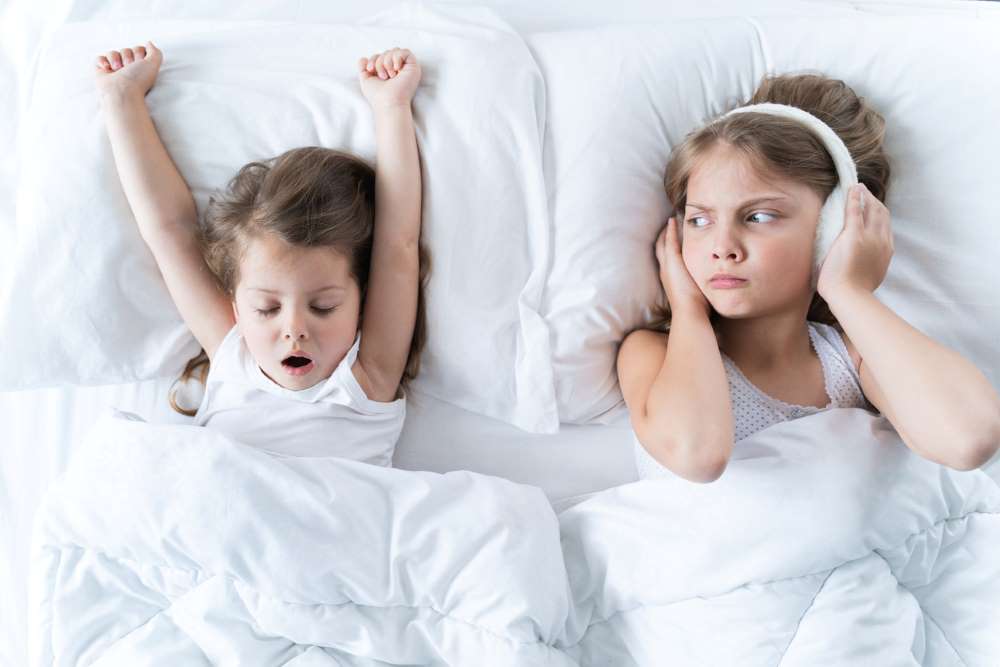
Sleep apnea is a common but serious condition characterized by interrupted breathing while a person is asleep. It can happen to both children and adults but can be more detrimental to younger patients. It can affect comfort and sleep quality, which can lead to daytime sleepiness and several behavioral issues in children. There are several causes for sleep apnea in children. A few of the most common reasons are:
-
Childhood obesity
-
Enlarged tonsils and adenoids
-
Having a small jaw or an overbite
-
Weakness in the tongue and throat muscles
-
Nasal allergies
-
Genetics
-
Use of sedatives or opioids
A number of lifestyle changes, sleep apnea solution books, and natural remedies are available to help combat sleep apnea in children. Below, we have gathered a list of home remedies parents can use to help their children manage sleep apnea symptoms better. Read on to learn more!
Continuous Positive Airway Pressure (CPAP) Machines
CPAP machines are the go-to solution for sleep apnea disorders. These devices are designed to send continuous streams of oxygen into a user’s nose and mouth. This encourages normal breathing and keeps the airways open while a person sleeps.
Although CPAP machines may be able to relieve your little one’s sleep apnea symptoms, there are certain problems and disadvantages that parents need to keep in mind. For instance, a CPAP machine might make it more difficult for your child to fall asleep, especially in the beginning. It may also cause dry mouth, nasal congestion, skin irritation or sores, and nosebleeds — on some occasions. Stay informed about any current CPAP recalls ensuring your children are safe and secure while using a CPAP machine.
Maintaining a Healthy Weight
People who are obese or overweight are more likely to develop sleep apnea disorders. Obesity can increase a person’s risk of airway obstruction, causing the breath to stop suddenly or for a certain period during sleep.
Your child’s pediatrician might recommend that your little one lose a couple of pounds if they are overweight or obese. Studies show that moderate weight reduction can eliminate the need for long-term CPAP therapy.
Using a Humidifier
Dry air can irritate the nasal pathways and respiratory system. Using a humidifier can help add moisture to the air and relieve irritation. Furthermore, it can also open a person’s airways, encourage normal breathing, and decrease nasal congestion.
Humidifiers often come with a choice of essential oils to infuse the humidifier steam with a pleasing aroma. The most common scents you will find are lavender, peppermint, and eucalyptus.
Ask your child which of the essential oils he would prefer to use with his humidifier. This will not only help your child improve breathing but also provide them with anti-inflammatory and soothing benefits.
Changing Sleeping Positions
Sometimes, the secret to solving sleep apnea is as simple as changing sleeping positions. According to a study conducted in 2006 of 120 patients with sleep apnea syndrome, it was found that more than half of the cases were dependent on sleeping position.
While adults can benefit more from sleeping on their side, research shows that children are better off sleeping on their back to relieve sleep apnea symptoms.
For more personalized solutions, it’s always better to talk to your child’s doctor to see what they have to say about your child’s condition.
Final Thoughts
As technology continues to advance, finding effective sleep apnea solutions become more and more available every day. Still, it’s important to pay close attention to what you choose to use, especially in the case of CPAP machines.
When in doubt, always have the right product liability lawyers like Schmidt & Clark on speed-dial. They will guide you through the process of filing a lawsuit against faulty and life-threatening products and make sure that you’re adequately compensated for any damages or injuries.



























